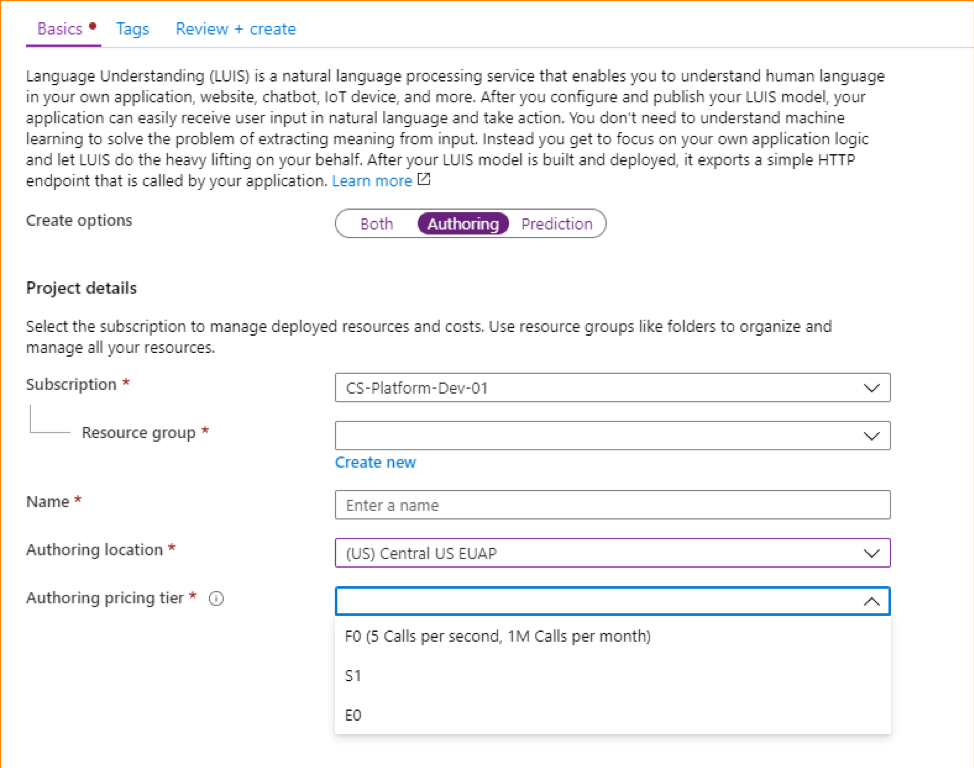Language Understanding service encryption of data at rest
Important
LUIS will be retired on October 1st 2025 and starting April 1st 2023 you will not be able to create new LUIS resources. We recommend migrating your LUIS applications to conversational language understanding to benefit from continued product support and multilingual capabilities.
The Language Understanding service automatically encrypts your data when it is persisted to the cloud. The Language Understanding service encryption protects your data and helps you meet your organizational security and compliance commitments.
About Azure AI services encryption
Data is encrypted and decrypted using FIPS 140-2 compliant 256-bit AES encryption. Encryption and decryption are transparent, meaning encryption and access are managed for you. Your data is secure by default and you don't need to modify your code or applications to take advantage of encryption.
About encryption key management
By default, your subscription uses Microsoft-managed encryption keys. There is also the option to manage your subscription with your own keys called customer-managed keys (CMKs). CMKs offer greater flexibility to create, rotate, disable, and revoke access controls. You can also audit the encryption keys used to protect your data.
Customer-managed keys with Azure Key Vault
There is also an option to manage your subscription with your own keys. Customer-managed keys (CMKs), also known as Bring your own key (BYOK), offer greater flexibility to create, rotate, disable, and revoke access controls. You can also audit the encryption keys used to protect your data.
You must use Azure Key Vault to store your customer-managed keys. You can either create your own keys and store them in a key vault, or you can use the Azure Key Vault APIs to generate keys. The Azure AI services resource and the key vault must be in the same region and in the same Microsoft Entra tenant, but they can be in different subscriptions. For more information about Azure Key Vault, see What is Azure Key Vault?.

Limitations
There are some limitations when using the E0 tier with existing/previously created applications:
- Migration to an E0 resource will be blocked. Users will only be able to migrate their apps to F0 resources. After you've migrated an existing resource to F0, you can create a new resource in the E0 tier.
- Moving applications to or from an E0 resource will be blocked. A work-around for this limitation is to export your existing application, and import it as an E0 resource.
- The Bing Spell check feature isn't supported.
- Logging end-user traffic is disabled if your application is E0.
- The Speech priming capability from the Azure AI Bot Service isn't supported for applications in the E0 tier. This feature is available via the Azure AI Bot Service, which doesn't support CMK.
- The speech priming capability from the portal requires Azure Blob Storage. For more information, see bring your own storage.
Enable customer-managed keys
A new Azure AI services resource is always encrypted using Microsoft-managed keys. It's not possible to enable customer-managed keys at the time that the resource is created. Customer-managed keys are stored in Azure Key Vault, and the key vault must be provisioned with access policies that grant key permissions to the managed identity that is associated with the Azure AI services resource. The managed identity is available only after the resource is created using the Pricing Tier for CMK.
To learn how to use customer-managed keys with Azure Key Vault for Azure AI services encryption, see:
Enabling customer managed keys will also enable a system assigned managed identity, a feature of Microsoft Entra ID. Once the system assigned managed identity is enabled, this resource will be registered with Microsoft Entra ID. After being registered, the managed identity will be given access to the Key Vault selected during customer managed key setup. You can learn more about Managed Identities.
Important
If you disable system assigned managed identities, access to the key vault will be removed and any data encrypted with the customer keys will no longer be accessible. Any features depended on this data will stop working.
Important
Managed identities do not currently support cross-directory scenarios. When you configure customer-managed keys in the Azure portal, a managed identity is automatically assigned under the covers. If you subsequently move the subscription, resource group, or resource from one Microsoft Entra directory to another, the managed identity associated with the resource is not transferred to the new tenant, so customer-managed keys may no longer work. For more information, see Transferring a subscription between Microsoft Entra directories in FAQs and known issues with managed identities for Azure resources.
Store customer-managed keys in Azure Key Vault
To enable customer-managed keys, you must use an Azure Key Vault to store your keys. You must enable both the Soft Delete and Do Not Purge properties on the key vault.
Only RSA keys of size 2048 are supported with Azure AI services encryption. For more information about keys, see Key Vault keys in About Azure Key Vault keys, secrets and certificates.
Rotate customer-managed keys
You can rotate a customer-managed key in Azure Key Vault according to your compliance policies. When the key is rotated, you must update the Azure AI services resource to use the new key URI. To learn how to update the resource to use a new version of the key in the Azure portal, see the section titled Update the key version in Configure customer-managed keys for Azure AI services by using the Azure portal.
Rotating the key does not trigger re-encryption of data in the resource. There is no further action required from the user.
Revoke access to customer-managed keys
To revoke access to customer-managed keys, use PowerShell or Azure CLI. For more information, see Azure Key Vault PowerShell or Azure Key Vault CLI. Revoking access effectively blocks access to all data in the Azure AI services resource, as the encryption key is inaccessible by Azure AI services.